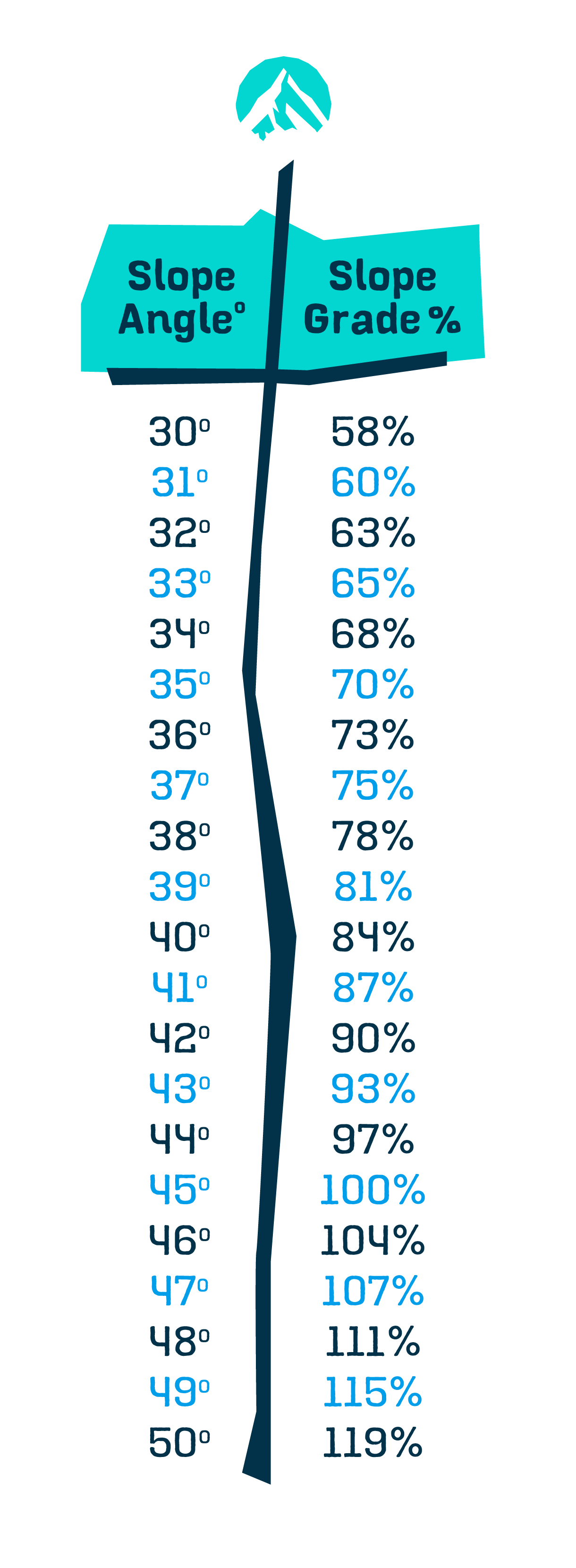

Have you noticed how the marketing departments of many ski resorts obsess about the angle or gradient of a run? A quick internet search will reveal fierce competition to claim the steepest. Is it Harakiri in Mayrhofen, Austria or Corbett’s Couloir at Jackson Hole in Wyoming, USA?
At the FreeRide Republic, we obsess about slope angle too, but not for the bragging rights that come with a successful descent of one of the world’s big beasts. That’s not because we’re above bragging (we most certainly aren’t) but because slope angle is a key predictor of avalanche.
When riding beyond the resort boundary we have to make our own decisions about which lines to ride and which to leave for another day. Avalanche is one of the principal risks that FreeRiders must manage and in order to do that we must know the angle of the slope we are considering, but why?
Avalanches occur when the pull of gravity overcomes the frictional forces holding the snow in place. Up to about 45°, the steeper the slope the greater the likelihood of an avalanche. Knowing the angle of the slope you’re about to ride is essential in assessing the probability of a slide. Here are some of the key stats you’re going to want to know as a FreeRider:
FreeRiders tend to use angles measured in degrees when analysing a slope, but sometimes you’ll see a slope grade or gradient indicated by a percentage instead. It’s fiendishly difficult to convert between angles and grades but it’s worth remembering that a 30° angle has a grade of 58% and a 45° angle has a grade of 100%. Remember this benchmark and you always have something to go on.
Check out the table below for a full comparison:

Now you know why slope angles or gradients matter, the next step is to figure out how to measure them so you always know what you’re getting into. Visit our article “How to measure slope angles” to find out more.
Explore the themes below to find the best home for the content you want to learn about: